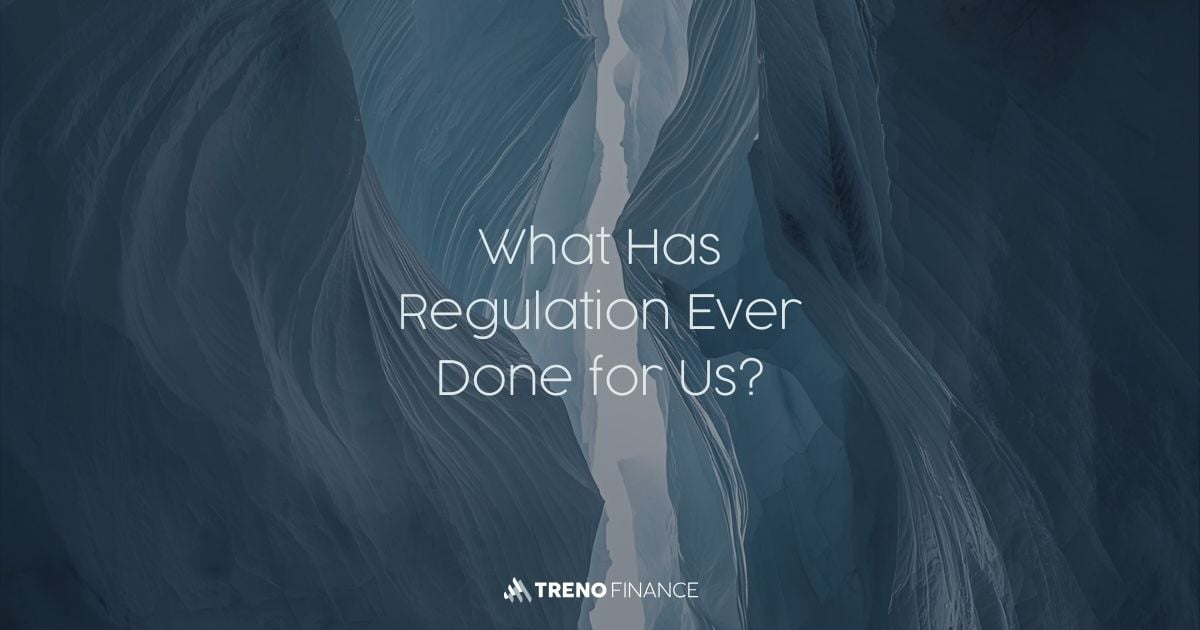Why Understanding Your Wallet History Shouldn't Require a Computer Science Degree
Explorers show data, not context, swaps, rewards, and transfers are often misclassified. Manual tracking fails with complexity and tax logic.
1. Introduction
So, you check your wallet. Numbers go up, numbers go down. ETH comes in, USDC goes out. Everything looks fine… until you actually try to figure out what the hell happened. Was that a trade? A transfer? A liquidity pool withdrawal? Oh wait, was that taxable?
If you've ever tried to make sense of your on-chain transactions, you already know: It's a hot mess. Blockchain explorers dump raw data on you, but they don't tell you what's actually happening. They show deposits, withdrawals, and fees, but they don't explain the context. And that's a problem-because if you don't understand the real meaning of your transactions, your portfolio tracking will be off, your reports will be useless, and, worst case, your tax filings will be an absolute disaster.
But don't worry, you're not alone. Let's break down why on-chain tracking sucks, why blockchain explorers won't save you, and how automation is the only sane solution.
2. Why Blockchain Explorers Aren't Enough
Blockchain explorers are great for what they do: giving you raw transaction history. But that's exactly the problem-it's just raw data. Explorers like Etherscan or BscScan can show you that an amount of ETH left your wallet and USDC arrived, but they won't tell you what actually happened.
Think about it:
- You see a deposit-but is it a trade, a transfer, or staking rewards?
- You see a withdrawal-but is it a sale, a liquidity pool exit, or just moving funds between your own wallets?
- You swap tokens on Uniswap, and your explorer logs a simple ETH → USDC transaction. But what about the fees, the slippage, the liquidity provider?
Here's where things get messy: If you withdraw liquidity from a DeFi pool, some tracking tools incorrectly categorize it as a taxable sale-even though you never actually "sold" anything. On the flip side, if you move crypto between your own wallets, some reporting systems flag it as income when it's literally just you shifting funds around.
See the problem? Blockchain explorers don't provide context. They can tell you that something happened, but they won't tell you what it means. And if you're managing a portfolio-or worse, preparing tax reports-this lack of categorization can lead to completely incorrect financial records.
Bottom line: A transaction dump is not enough. If you want a real view of your portfolio (or tax liability), you need something smarter-something that actually understands what your transactions represent.
3. What's Actually Taxable? Not Every Transaction Is What It Seems
One of the worst mistakes you can make when tracking your crypto transactions? Assuming that every single movement is taxable. Or, even worse, assuming that none of them are.
The reality is that not all transactions are created equal-some trigger taxable events, while others are just routine movements that shouldn't be taxed at all. If you don't categorize them correctly, you could end up either overpaying on taxes (ouch) or missing taxable events entirely (also ouch, but in an "audit risk" kind of way).
Let's break it down:
✅ Trades (Buying/Selling Crypto)
→ Yes, taxable (capital gains or losses).
Whenever you sell crypto for fiat (USD, EUR) or exchange one token for another (BTC → ETH), that's a taxable event in most jurisdictions. Even if you didn't cash out to your bank account, swapping assets still counts as a disposal, and your profits (or losses) need to be reported.
✅ Swaps (ETH → USDC, etc.)
→ Also taxable.
A lot of people assume that swapping tokens within the crypto ecosystem isn't taxable. It is. Even though you never converted to fiat, many tax authorities treat this the same as a regular trade.
✅ Staking/Lending Rewards
→ Maybe taxable (depends on your country's laws).
Some governments tax staking and lending rewards the moment they hit your wallet, while others only tax them when you sell. If you're in DeFi or earning passive income, you need to check your local tax rules.
❌ Wallet Transfers (Moving funds between your own wallets)
→ Not taxable (but can be misclassified).
Moving ETH from your Ledger wallet to Metamask? Not a taxable event. But here's the kicker: If your tracking tool doesn't categorize it properly, it might get reported as a trade or income. And that's how you accidentally overpay.
❌ Collateral for a Loan (e.g., locking ETH in Aave)
→ Not taxable.
Depositing crypto as collateral for a loan isn't a sale-it's more like putting money in a security deposit. However, the tax situation changes when you withdraw or liquidate that collateral.
⚠️ Liquidity Provision & Withdrawal
→ Complicated.
Some tax authorities see liquidity provision (e.g., supplying funds to a Uniswap pool) as a simple deposit, while others consider it a taxable swap. Same goes for withdrawals-you might get back different tokens than what you originally put in. This is where a proper tracking system can save your sanity.
If your transactions aren't properly categorized, you risk paying taxes on things that aren't taxable-or worse, ignoring taxable events altogether. The only way to stay compliant (without pulling your hair out)? Use a system that intelligently categorizes transactions for you.
4. Manual Tracking? Sure, If You Hate Your Free Time
If you only make five trades a year, then yeah-manual tracking is fine. You could probably keep it all in a spreadsheet and call it a day. But let's be real-you're not here because you casually buy some BTC and forget about it.
If you're using multiple wallets, trading frequently, staking, farming yields, using DeFi, or even just holding long-term across different chains, your transaction history is already an absolute mess to manage manually.
Let's say you:
- Trade across multiple exchanges and wallets (CEX, DEX, self-custody).
- Provide liquidity in DeFi pools like Uniswap or Curve.
- Stake some ETH and reinvest your rewards automatically.
- Move crypto between cold storage, hardware wallets, and hot wallets.
Congrats-your transaction history is now unreadable chaos.
At this point, manual tracking isn't just inefficient-it's impossible. You'd have to painstakingly sort through every transaction, track cost basis, classify taxable events, and reconcile transfers to avoid misreporting.
And the worst part? One mistake-just one mislabeled transaction-could completely throw off your portfolio tracking and tax calculations.
Or... you could just automate it and let a smart system handle everything for you. Because let's be honest: You have better things to do than manually reconciling every on-chain transaction.
5. API-Powered Tracking and Automated Categorization
Here's the good news: You don't have to track every single transaction manually. There's a smarter way to handle your on-chain activity-and it doesn't involve endless spreadsheets or cross-referencing blockchain explorers.
With an API-powered tracking system, you can automate the entire process, ensuring that every transaction is categorized correctly from the start. Instead of spending hours trying to decipher what happened in your wallet, you get clean, structured data that actually makes sense. With our Analytics API, you can achieve exactly that, professional tracking without manual effort.
Here's how it works:
- Automatic Wallet Syncing → Connect your wallets and let the system pull in transactions automatically. No more manually copying and pasting addresses. No missing data. No surprises.
- Smart Categorization → Every transaction is instantly classified-trades, transfers, rewards, staking, and DeFi interactions are labeled correctly so your records are clear and audit-proof.
- Export-Ready Reports → Whether you need reports for taxes, portfolio tracking, or compliance, you get organized, structured data-not a chaotic mess of raw blockchain transactions.
- Alerts for Taxable Events → Stop guessing which transactions might trigger a tax event. A smart system flags potential taxable events, so you're never caught off guard.
With an API-driven system, there's no more guessing, no more misclassified transactions, and no more "WTF happened here?" moments when reviewing your on-chain activity. Instead, you get real insights, clear reports, and an automated process that actually saves you time.
Because let's be honest-you didn't get into crypto to spend your life tracking transactions. You got in to grow your assets, make smart decisions, and stay ahead of the market. An automated system lets you do exactly that-without drowning in manual work.
6. Conclusion: Get Your On-Chain Transactions Under Control
If you're still manually tracking transactions or relying on blockchain explorers alone, you're setting yourself up for a world of pain. On-chain data is messy, and without proper categorization, your portfolio tracking will be inaccurate, and your tax reports? Even worse.
Here's what you need to remember:
- Blockchain explorers give you transactions, but no context. You'll see raw data, but you won't know what's a trade, a transfer, or a taxable event.
- Not every transaction is taxable-but you need to know which ones are. Mislabeling events can mean paying taxes on non-taxable movements or, worse, missing taxable events entirely.
- Manual tracking is a waste of time when APIs can do it better. Why spend hours sorting through transactions when an automated system can do it instantly, accurately, and without human error?
The smart move? Stop playing detective with your wallet history. Automate your tracking, get clean reports, and stop losing sleep over what's actually happening in your transactions. With an API-powered solution, you get structured, categorized, and audit-proof data-without the chaos.






